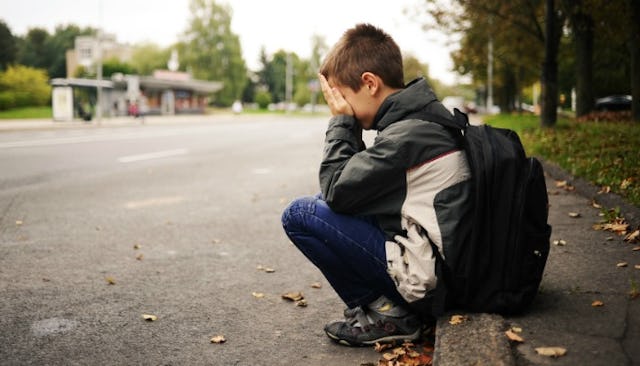Youth Suicide: Let's Give Them Hope

“I just can’t take it anymore. The voices are getting stronger, and I find that I can’t pull myself away. It’s getting too hard, and I don’t want to live. Please help me.” Sitting across from me, she speaks those words. Desperation, fear and sadness mix with the tears running down her face. I can’t help but notice her hands; they shake and she tries to control them. It’s the only thing she feels like she can still control.
She settles herself enough to answer a few questions—the questions I have to ask as a school counselor, the ones I hate asking. There are usually three that I start with. Sometimes it’s easier just to go for it; they know what’s coming.
“Are you thinking about hurting yourself—about killing yourself?”
“Do you have a plan?”
“Do you have means to do it?”
For some reason, the last one is the hardest. I have been asking those questions for 15 years, and the answer to the third question feels so final. If they are confident enough in their plan to have a means to carry it out, we are really close to losing them.
On any given day, this conversation is taking place. It may be happening in a counselor’s office, a classroom, with a therapist, pastor or friend. We are lucky if it is taking place—that means there is hope. It’s the ones who don’t talk about it that we lose, those who have meticulously answered all three of those questions on their own. We lost them before they even left us.
According to the Centers for Disease Control and Prevention, there were 42,773 suicides reported in 2014, making suicide the 10th leading cause of death for Americans. In that year, someone in the United States died by suicide every 12.3 minutes on average.
There is a direct correlation between depression and teen suicide. The CDC reports that for youth between the ages of 10 and 24, suicide is the third leading cause of death. It results in approximately 4,600 lives lost each year. The top three methods used in suicides of young people include firearm (45 percent), suffocation (40 percent) and poisoning (8 percent).
Death from suicide is only part of the problem. More young people survive attempts than actually die. A nationwide survey of youth in grades 9 to 12 in public and private schools in the United States found that 16 percent of students reported seriously considering suicide, 13 percent reported creating a plan, and 8 percent reported trying to take their own life in the previous year.
There was one morning in particular that I remember the most. It was winter, so the faint sign of light in my office was coming from a small lamp. I had just arrived at work and saw the shadow of someone sitting in one of my chairs. I wasn’t expecting anyone this early, so I found myself a bit apprehensive about what to expect.
Sitting in the dark was the one student I worried about the most. He was the one who I thought about when I went home at night—wondering if I would see him the next day. His head was down, and his hands were trembling. Tears escaped his eyes as he looked up at me. His voice was quiet, but serious as he spoke to me: “I almost did it last night.”
I found myself wanting to say something, to start asking the questions and going through my list of what to do, but I stopped and just listened.
“I was sitting in my room with the gun. It was loaded. I had it in my mouth and my finger on the trigger and then I heard it—my mom. She had just come home and called out my name. I stopped.”
Even writing this now, so many years later, I ache for him. His pain, desperation, isolation, hopelessness and helplessness was too much. Killing himself was the only option he felt he had. I always think about the interruption that night. His mom calling out his name—that defining moment in her life. The moment that saved his life.
Time
Time is what we talk about with youth. Many of them report an urge to kill themselves that sometimes lasts a short time. If they can get through it, they do not complete suicide. If they do not have access to end their life, they wake up the next day. If someone happens to interrupt them, they can get help before they feel the urge again. If they have a lifeline—someone to reach out to—we see them at school.
There is no empty chair in a classroom.
Trust
Identifying one person they can go to, one person they can trust to be vulnerable with, to open up and share their thoughts with—this is what we desperately hope for in the fight to save their life.
Connections
Human connection is a powerful thing. When it seems that there is no one who understands, a hand reaching out is sometimes the one thing that begins the journey toward seeking help.
I’m not sure if I have the answer for how to end this. I don’t even know if we will ever celebrate a decline in youth suicides. It seems as though the numbers are staggering. Any suicide is one too many.
What I do know is that our kids need us. They need to see hope in our eyes and feel heard and accepted when they come to us. We need to help them understand that they are not alone in a world that feels so lonely.
We need to tell them to keep holding on.
There is help.
There is hope.
They are not alone.
This is not how their story has to end.
This article was originally published on